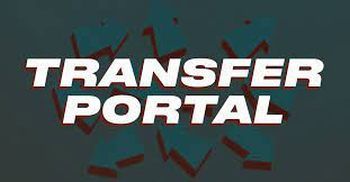
Publisher:
Bonnie King
CONTACT:
Newsroom@Salem-news.com
Advertising:
Adsales@Salem-news.com

~Truth~
~Justice~
~Peace~
TJP
May-23-2023 17:47

 TweetFollow @OregonNews
TweetFollow @OregonNews
The Transitional Nature of College Athletics
Ralph Stone, Salem-News.com CommentaryFewer than 2% of NCAA student-athletes go on to be professional athletes.
 |
(SAN FRANCISCO, CA.) - Major League Baseball has an elaborate minor league system, while the National Football League (NFL), the National Basketball Association (NBA) and Women’s National Basketball Association (WNBA) do not.
The NFL, NBA and WNBA draw their talent from colleges and university programs who in turn draw players from high schools.
If a student-athlete aspires to be a professional player, he or she must hone their skills and showcase them while in college.
If student-athletes feel they are not getting enough playing time or are on an unsuccessful team or are dissatisfied with the coaching staff or college itself they will seek to transfer to another institution.
The National Collegiate Athletic Association (NCAA) transfer portal launched in 2018 and a 2021 U.S. Supreme Court decision has made it easier and in some cases more lucrative for student-athletes to transfer.
The NCAA Transfer Portal is a database to manage and facilitate the process for student-athletes desiring seeking to transfer between member institutions.
The transfer portal allows student-athletes to place their name in an online database declaring their desire to transfer.
Once an athlete's name is entered in the database, coaches and staff from other schools are permitted to make contact with the athlete to inquire about their interest in visiting the campus and accepting a scholarship.
Student-athletes in Divisions I and II football, men’s and women’s basketball, men’s hockey and baseball change schools using the portal once without sitting out a year after the transfer.
On July 1, 2021, the U.S. Supreme Court in NCAA v. Alston ruled that the NCAA's ban of payments to student-athletes violated Section 1 of the Sherman Antitrust Act.
The NCAA was forced to remove restrictions on what college athletes could earn from the use of their names, images and likenesses (NIL).
Under the NCAA rule change, college athletes get paid from their social media accounts, broker endorsement deals, autograph signings and other financial opportunities, and use an agent or representatives to do so. This Supreme Court decision, hopefully, helps balances a college sports system that generates huge sums for the NCAA, university athletic programs and top football and basketball coaches but provides scholarships for tuition and room and board but falls short of covering the full cost of attending school.
Players are expected to maintain a rigorous training and playing schedule while keeping up their studies.
According to NCAA research, in Division I, 20,911 student-athletes entered the Transfer Portal in 2022, an increase over the 2021 total (17,781).
Of this total, 78% of the entrants in women's sports were on athletics aid at their departing school, while 65% of those in men's sports were on athletics aid upon portal entry.
Additionally, 30% of the student-athletes who entered the Transfer Portal in 2022 were graduate students, only 1 percentage point lower than in 2021.
While 13% of all Division I student-athletes were entered into the Transfer Portal in 2022, 7% of all Division I student-athletes successfully transferred to an NCAA program after portal entry.
Fewer than 2% of NCAA student-athletes go on to be professional athletes. In reality, most student-athletes depend on academics to prepare them for life after college.
Education is important. There are nearly half a million NCAA student-athletes, and most of them will go professional in something other than sports.
Thus, a college or university can use various NIL inducements to lure a student-athlete in the transfer portal to transfer to that institution.
Stanford women’s basketball head coach Tara VanDerveer said after losing three transfers this offseason, all to Power 5 schools: “I think you certainly have to have a heightened awareness of the transitional nature of college athletics now... [I]f somebody’s not happy, there’s going to be opportunities in other places.”
Transactional relationships do not build loyalty. Student-athletes and families need much more than a transactional relationship with the college or university; they should get a transformational experience where the institutions put the needs of the student-athlete above the needs of the institution.
If the transfer portal continues to take over college athletics at the rate that it is now, the system will continue to be a transactional one.
Articles for May 23, 2023 | Articles for May 24, 2023


Salem-News.com:
googlec507860f6901db00.html


Terms of Service | Privacy Policy
All comments and messages are approved by people and self promotional links or unacceptable comments are denied.
[Return to Top]
©2026 Salem-News.com. All opinions expressed in this article are those of the author and do not necessarily reflect those of Salem-News.com.